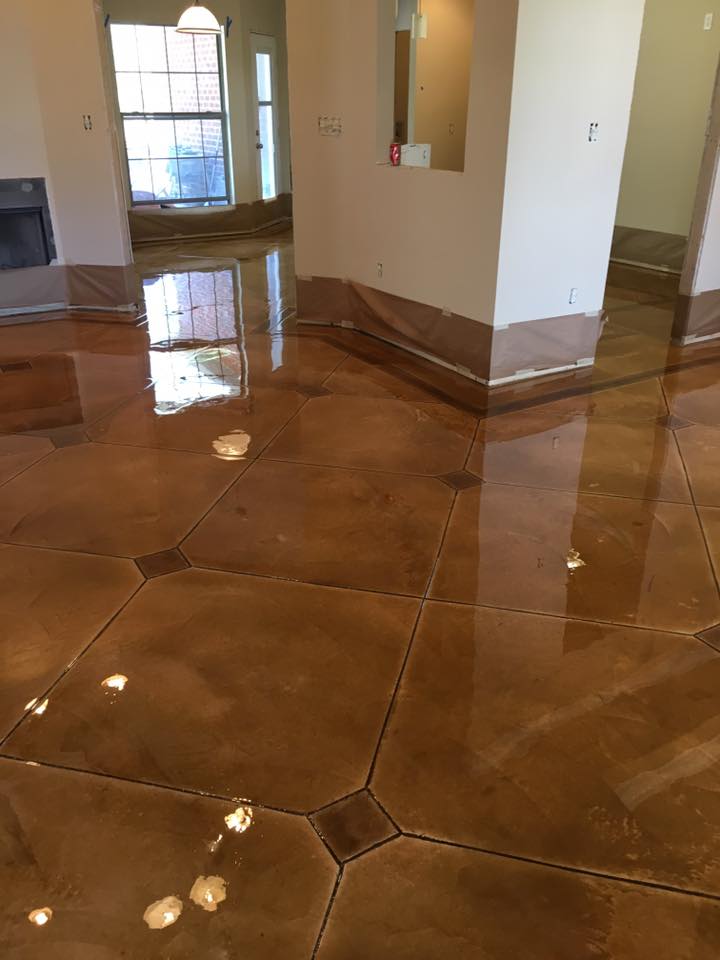

Pourable, self-leveling systems tend to cover floors faster with less finish work than trowel- or spray-applied products. Some overlays can go right over properly prepared surfaces others require application of a primer or bonding agent before overlay placement. Others require mixing the polymer additive and any pigmentation desired with the cement and other dry ingredients. Some products come preblended like a cake mix, and all you need to add is water. How easy is the product to mix and apply?Įase of use may also influence overlay selection, especially if you're the installer. Using more than one coloring method (such as integral color combined with broadcast pigments and stains or dyes) will also boost the final cost. The total cost of overlay installation will be higher if you are using stencils, stamping mats, or decorative engraving or sawcutting to pattern the surface. Often a higher-build material or a material containing aggregates will perform better in aggressive environments. Is the slab outdoors and subject to weather extremes and freezing and thawing? Is it a floor surface in a high-traffic area or subject to chemical, grease, and oil spills? Although most systems will stand up well to wear, chemical attack, and dirt penetration when properly installed and sealed, some are better suited than others for harsher exposure conditions. (Read more about reducing bond failures caused by moisture vapor transmission.) What conditions will the overlay be exposed to?īe sure the topping or overlay system is tough enough to withstand all the conditions it will confront. If it's too high, be sure to use a permeable overlay system that will permit the moisture vapor to escape. There are simple tests you can perform to check the moisture vapor emission rate of concrete. Too much moisture in the concrete substrate can also be a problem for some overlay systems, especially products that restrict the ability of the concrete to "breathe" or release moisture vapor as needed. Unless the surface imperfections are expertly patched or filled, they could telegraph through a thinner overlay, such as a microtoppping or skim coat. What is the condition of the existing surface?ĭoes the concrete have a lot of cracks or gouges? Is the surface out of level? If so, choose a higher-build material, such as a self-leveling or stampable overlay that can be applied at a thickness of 1/4 inch or greater.

Here are some questions to ask to help you find a system that will strike the perfect balance for the job at hand. Selecting the most appropriate resurfacing system often involves weighing performance attributes against aesthetic value.
#Concrete overlay design how to#
How to Select the Proper Thickness for Your Concrete Floor Concrete Overlays Home Get the Look - Interior Overlay Pictures When to Use a Polymer Overlay Comparison Chart of Overlay Systems: Which is best for your project? Five Factors to Consider when Choosing a Resurfacing System Concrete Overlay Reviews Types of Overlays Epoxy Coatings Microtoppings & Skim Coats Self-Leveling Overlays Spray-Down Toppings Polishable Overlays Stamped Concrete Overlays Preparing Concrete for Resurfacing Concrete Resurfacing Reducing Bond Failures Caused by Moisture-Vapor Transmission Don't Let Water Vapor Delaminate Your Overlay: How to seal concrete before an overlay How-To Tips for Installing Concrete Overlays Answers to Common Questions About Concrete Overlays: Advice from expert Chris Sullivan How to Add Color to Concrete Overlays How to Protect and Maintain Resurfaced Concrete Overlay Tools: Seven essential tools for concrete resurfacing Related Information Concrete Overlay Videos, with Bob Harris Decorative Concrete Overlays: A primer of the various overlay types and the decorative possibilities with each Vertical Concrete Overlays: Lightweight cement-based overlays mimic stone, brick, and other wall textures


 0 kommentar(er)
0 kommentar(er)
